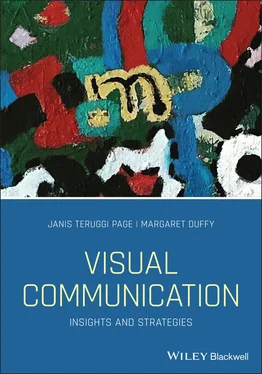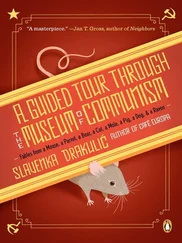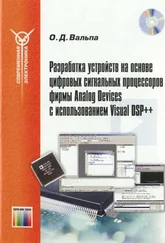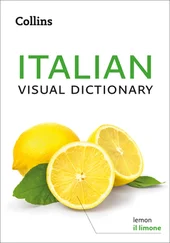LO3Apply strategies for evaluating the ethics of visual communication that you or others create.
Earlier in this chapter, in the section on Pluralism, you read that Ross's first duty is fidelity or the responsibility to keep promises, be truthful, and fulfill contracts and obligations. That means we shouldn't lie. However, another one of Ross's duties is non‐injury : our responsibility to avoid hurting other people physically, emotionally, or psychologically.
Ross's approach can be useful to professionals in advertising, journalism, and other media because of the frequently competing roles they must fulfill (Wilkins, 2016). For instance, a health communication message meant to address a problem of childhood obesity could be considered beneficent since it is a serious public and individual health problem. However, some messages may have unintended effects (Thorson and Duffy, 2016). Visuals are very powerful and can evoke visceral responses, short‐circuiting our processes in evaluating the worth of messages (Page and Duffy, 2016). A good example is the Strong4Life campaign from Children’s Healthcare of Atlanta that used images of obese children believing that such images would motivate pediatricians, families, and schools to provide supportive actions. However, some critics said that the campaign stigmatized and shamed overweight children (Lohr, 2012).
Thus, the duty to do no harm and duty for beneficence come into conflict and the multiple duties of public health professionals and those creating the campaign arise. According to Wilkins (2016), Ross's typology encourages us to look at the specifics and the context of circumstances and decide which duty outweighs the others in a given situation.
FOCUS: Rethinking Diversity in Visual Narratives
A video series by the nonprofit iBiology showcases researchers who represent overlooked groups. “Background to Breakthrough” features Latino Estaban Burchard's journey from growing up in a poor, single parent home to his adult life as a health expert on asthma. The video's unique perspective frames Burchard not as a marginalized survivor, but rather as an creative achiever drawing from his valuable life experience to become a world‐renowned researcher and tenured professor at the University of California, San Francisco.
While many narratives about scientists from underrepresented backgrounds present an “underdog” story, iBiology believes they are stale, overused, and lack contextual depth.
This “surviving the odds” storyline does not fairly represent the scientists and science itself; rather, it is one dimensional. It diminishes the way they are seen and understood, harming the way others like them could envision themselves as scientists. And it obscures the value of diversity in the field and how it shapes breakthroughs.
iBiology's open‐access free videos in this series provide a broader picture using a variety of visual storytelling strategies focusing on how the race, identities, cultures, and backgrounds of underrepresented scientists fire up their ingenuity and approaches to problem solving. In Burchard's videos, he's not only seen as a researcher but as a mentor and activist. The essential message is that diversity enhances scientific research so that it helps people of all backgrounds.
Visual Storytelling Strategies
Make a direct connection: Burchard directly asks the viewer, “If you were a parent, would you let your child use this?” “This” is a drug that significantly increases the risk of death in African Americans. With the question, Burchard, an expert on asthma health, builds a one‐on‐one rapport with the audience, engages them emotionally, and communicates care and credibility.
Use visual comparisons: Race is a “shopping cart that contains lots of information that is relevant for clinical and biomedical research,” explains Burchard. An animation illustrates the relationship between race and biology and its complexities – creatively explained in a compelling and accurate way.
Show visual evidence: Rather than defining Burchard as an underdog who rose to the top, the producers explored how he overcame the challenges he faced. They looked at hundreds of old photos to show and tell a more nuanced story of how Latino culture gave him unique perspectives in science research – bringing to life the many mentors who gave him the confidence, support, and guidance throughout his journey
Source: https://blogs.scientificamerican.com/voices/rethinking‐the‐narrative‐of‐diversity‐in‐science
The Potter Box is a useful tool to guide us in answering ethical questions in visual communication and incorporates the values suggested by Ross. Devised by theologian Ralph Potter, it provides a step‐by‐step process to weigh varying situations and values. As you can see, the Potter Box (Figure 2.9) visually shows a process that involves four major elements of ethical decision‐making. The four steps are:
1 Definition: identifying the facts of a given problem or situation.
2 Values: considering what issues and outcomes are most important to you.
3 Principles: thinking about the ethical philosophies you subscribe to.
4 Loyalties: considering your loyalty to various stakeholders.
Let's take a closer look at each step:

Figure 2.9 The Potter Box.
Source: © John Wiley & Sons, Inc.
In the case of the children's anti‐obesity campaign, the facts of the situation are that the state of Georgia faces a public health crisis. The children who are obese face the likelihood that they will experience disease and shortened life spans. The state faces the problem of increased health care costs and potentially unsustainable budget expenditures.
The second step is more difficult because the meaning of the concept “values” is often unclear for many people. Patterson and Wilkins (2002) point out that when we discuss ethical values, we need to be clearer about their meanings: “when you value something – an idea or a principle – it means you are willing to give up other things for it” (p. 77). An important value for government leaders is positive health outcomes for the people in the state. Another value would be effectiveness in that state leaders would want to know and be able to tell others that funds invested in this strategy actually worked to improve health and reduce obesity. Some in government might highly value what they perceive as honesty and truth in telling people “like it is” rather than sugarcoating issues to protect their feelings. Still other values could be protecting vulnerable populations such as children from psychological harm from hard‐edged or even cruel messages. As Patterson and Wilkins (2002) point out, “values often compete and an important element of using the Potter Box is to be honest about what you really do value” (p. 77).
The third step is a careful examination of ethical principles that underpin values and ethical decisions. Someone who is a consequentialist might insist that even if someone's feelings get hurt in the process, more people will benefit from tough anti‐obesity messages. Someone who is a deontologist or absolutist might argue that it is never acceptable to injure others psychologically or physically regardless of the potential outcome. Someone following Ross's principles on prima facie duties would consider what values are in conflict in this particular case and which should be most important, and these can help you be more systematic in reasoning through ethical dilemmas. Ross's approach is helpful, we think, because it offers guidelines for this reasoning rather than rules that are expected to apply in any given situation.
Читать дальше













